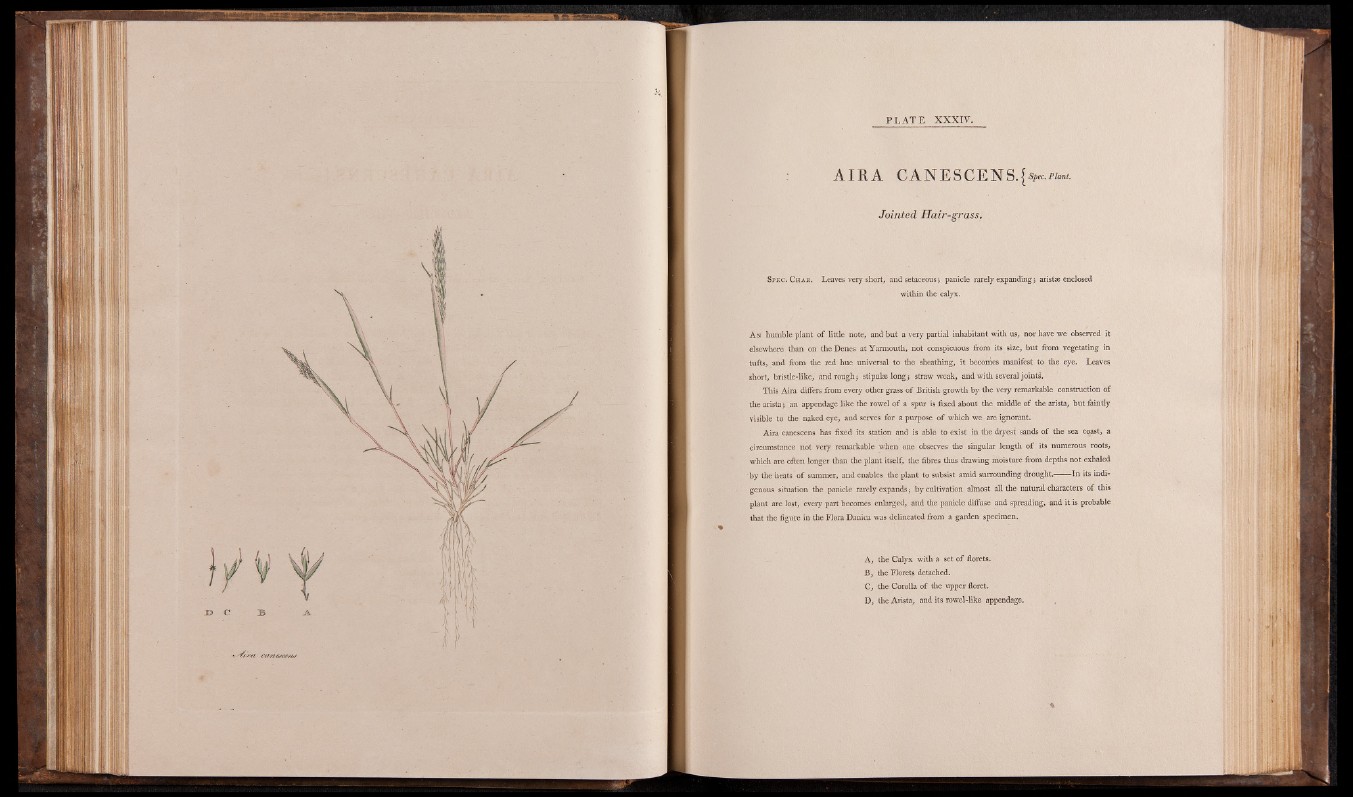
AIRA CANESCENS.{«<■»*•
Jointed Hair-grass.
Spec. C har. Leaves very short, and setaceous; panicle rarely expanding; aristae enclosed
within the calyx.
An humble plant of little note, and but a very partial inhabitant with us, nor have we observed it
elsewhere than on the Denes at Yarmouth, not conspicuous from its size, but from vegetating in
tufts, and from the red hue universal to the sheathing, it becomes manifest to the eye. Leaves
short, bristle-like, and rough; stipulae long; straw weak, and with several joints.
This Aira differs from every other grass o f British growth by the very remarkable construction of
the arista; an appendage like the rowel of a spur is fixed about the middle of the arista, but faintly
visible to the naked eye, and serves for a purpose of which we are ignorant.
Aira canescens has fixed its station and is able to exist in the dryest sands of the sea coast, a
circumstance not very remarkable when one observes the singular length of its numerous roots,
which are often longer than the plant itself, the fibres thus drawing moisture from depths not exhaled
by the heats of summer, and enables the plant to subsist amid surrounding drought.------ In its indigenous
situation the panicle rarely expands; by cultivation almost all the natural characters of this
plant are lost, every part becomes enlarged, and the panicle diffuse and spreading, and it is probable
that the figure in the Flora Danica was delineated from a garden specimen.
A, the Calyx with a set o f florets.
B, the Florets detached.
C, the Corolla of the upper floret.
D, the Arista, and its rowel-like appendage.